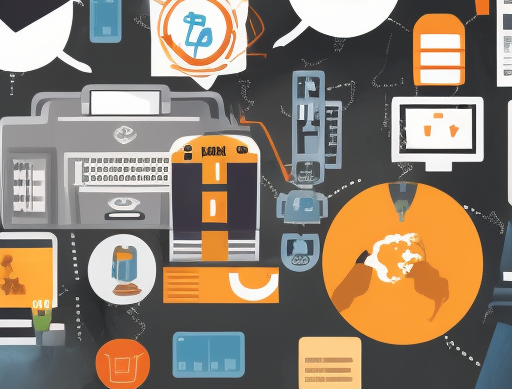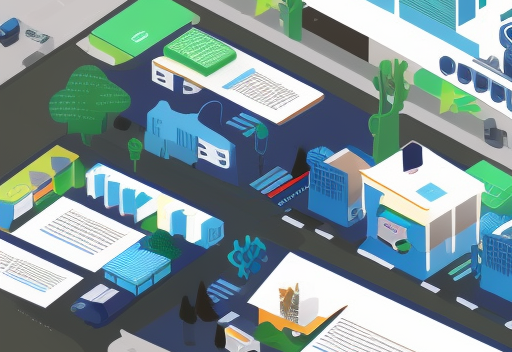
The ImpactLabs community facilitates the development of locally-targeted solutions by emerging innovators. Members can start or join projects, via our Projects page, to solve problems in various areas using technology.
If you’re an innovator looking for inspiration, here is a list of ideas that leverage software and hardware technology to develop community-driven innovations that solve local problems.
- Agricultural Data Analytics: Imagine a platform that uses machine learning to analyze data from various sources, such as weather patterns and soil conditions, to provide personalized recommendations for farmers.
Purpose: To To help increase efficiency and profitability for small farmers, while also promoting sustainable agriculture practices.
- Waste Management App: What if there was an app that helped businesses and individuals track and reduce their waste output, connecting them with local recycling and composting resources?
Purpose: To To encourage more responsible waste management and reduce the amount of waste that ends up in landfills.
- Vertical Farming in Urban Areas: Imagine a network of vertical farms in underutilized urban spaces, such as rooftops and abandoned buildings, using hydroponic technology to grow fresh produce year-round.
Purpose: To To improve access to healthy, locally-grown food and have a smaller environmental footprint compared to traditional farming methods.
- Sustainable Fashion: What if a fashion designer created a line of clothing made from sustainable and recycled materials, with a focus on ethical manufacturing practices?
Purpose: To To create stylish, high-quality clothing that has a minimal impact on the environment and promotes social responsibility.
- Virtual Reality Education: Imagine a team of educators using virtual reality to create immersive learning experiences for students, covering a range of subjects from history to science.
Purpose: To To make education more interactive and engaging for students and have the potential to revolutionize the way we learn.
- Smart Transportation Network: What if a startup developed a network of electric, autonomous shuttles to provide efficient and environmentally-friendly transportation in urban areas?
Purpose: To To reduce traffic congestion and pollution in cities, while also providing a convenient and affordable transportation option for commuters.
- Adaptive Reuse Development: Imagine a developer repurposing abandoned buildings and structures in a city, turning them into vibrant and useful spaces for the community.
Purpose: To To reuse existing resources and revitalize neighborhoods, while also incorporating sustainable design elements such as energy-efficient appliances and drought-tolerant landscaping.
- Artificial Intelligence for Social Good: What if a group of researchers used artificial intelligence to tackle social issues such as poverty and inequality, developing solutions to help improve people’s lives?
Purpose: To To harness the power of AI to make a positive impact on society and address some of the world’s most pressing challenges.
- Virtual Mental Health Clinic: Imagine a group of mental health professionals developing a virtual clinic to provide accessible and affordable mental health care to underserved communities.
Purpose: To To improve access to mental health care and reduce barriers to treatment, particularly for people in rural areas or those with mobility issues, or those who may feel a stigma about seeking in-person mental health care.
- Augmented Reality Retail: Imagine a retail platform that uses augmented reality to allow customers to virtually try on clothes and accessories from the comfort of their own homes.
Purpose: To To make shopping more convenient and help reduce waste from returns.
- Smart City Infrastructure: What if a city implemented a network of sensors and other technologies to improve the efficiency and sustainability of its infrastructure, such as its transportation, energy, and waste systems?
Purpose: To To help reduce the city’s environmental impact and improve the quality of life for its residents.
- Collaborative Online Learning: Imagine a platform that brings together students, educators, and industry experts from around the world to collaborate on online learning projects.
Purpose: To To create a global learning community and provide students with access to a wider range of resources and expertise.
- Community-Driven Disaster Response: Imagine a platform that uses artificial intelligence and geolocation data to identify and respond to natural disasters and emergencies in real-time.
Purpose: To To connect volunteers with organizations and resources in their area, allowing them to assist with recovery and relief efforts.
- Local Food Supply Chain Optimization: What if there was a platform that used data analytics and machine learning to optimize the local food supply chain, from production to distribution?
Purpose: To To help local farmers and producers increase efficiency and profitability, while also improving access to fresh, locally-grown food for consumers.
- Virtual Mentorship and Skill-Sharing: Imagine a platform that connects local mentors with aspiring entrepreneurs and professionals, allowing them to share knowledge and expertise through virtual meetings and workshops.
Purpose: To To help support the growth of local businesses and organizations and foster a sense of community.
- Community Renewable Energy Co-op: Imagine a group of local residents coming together to form a co-op to develop and operate renewable energy projects, such as solar or wind farms, in their community. The co-op could be financed through a combination of grants and crowdfunding, and the excess energy could be sold back to the grid, providing financial benefits for the community.
Purpose: To To help increase the use of clean energy and reduce reliance on
- Sustainable Waste Management: Imagine a platform that uses machine learning to optimize the collection and processing of waste in a city, reducing the amount of waste that ends up in landfills and increasing the efficiency of recycling and composting.
Purpose: To To help reduce the environmental impact of waste and promote the circular economy.
- Virtual Health Clinic for Underserved Communities: What if there was a platform that provided virtual health care services, such as telemedicine, to underserved communities, particularly in rural areas or areas with a shortage of health care providers?
Purpose: To To help improve access to health care and reduce barriers to treatment.
- Community-Supported Agriculture: Imagine a platform that connects local farmers with consumers, allowing them to purchase fresh, locally-grown produce directly from the farmers.
Purpose: To To help support the local agriculture industry and provide consumers with access to fresh, high-quality food.
- Virtual Job Training and Placement: What if there was a platform that provided virtual job training and placement services for people in underserved communities, particularly those who may face barriers to employment such as disabilities or lack of transportation?
Purpose: To To help increase access to job opportunities and improve economic mobility for these individuals.
- Community-Based Renewable Energy Financing: What if there was a platform that allowed local residents to invest in and finance renewable energy projects in their community, such as solar or wind farms?
Purpose: To To help increase the use of clean energy and provide financial benefits for the community, while also giving residents a sense of ownership and investment in the projects.
- Virtual Language Exchange: Imagine a platform that connects people from different countries and cultures, allowing them to practice and learn new languages through virtual conversations and cultural exchange.
Purpose: To To help foster a sense of global community and promote cultural understanding.
- Community-Based Mental Health Support: What if there was a platform that provided mental health support and resources to local communities, particularly those that may face barriers to accessing mental health care such as rural areas or underserved communities?
Purpose: To To help improve access to mental health care and reduce the stigma around seeking treatment.
- Virtual Professional Development: Imagine a platform that provides virtual professional development opportunities for local professionals, such as workshops, courses, and networking events.
Purpose: To To support the growth and development of local businesses and organizations.
- Smart Agriculture Marketplace: Imagine a platform that connects small-scale farmers with local buyers, such as restaurants and markets, allowing them to sell their products directly to consumers.
Purpose: To To help increase efficiency and profitability for the farmers, while also providing consumers with access to fresh, locally-grown food.
- Virtual Community Garden: What if there was a platform that allowed people to join or start virtual community gardens, connecting them with resources such as gardening tips and tools, and allowing them to share produce with others in their community?
Purpose: To To help promote sustainable agriculture and encourage a sense of community.
- Virtual Community Center: Imagine a platform that provides a virtual space for local community groups and organizations to meet, share resources, and collaborate on projects.
Purpose: To To help foster a sense of community and support the growth of local organizations.
- Community-Driven Climate Action: What if there was a platform that allowed local residents to get involved in climate action initiatives in their community, such as renewable energy projects or waste reduction efforts?
Purpose: To To help increase the use of clean energy and promote sustainable practices, while also giving residents a sense of ownership and investment in the initiatives.
- Virtual Community-Supported Art: Imagine a platform that allows local artists to sell their work directly to consumers and receive support from the community through crowdfunding or other means.
Purpose: To To help support the local art scene and encourage a sense of community.
- Community-Based Water Management: Imagine a platform that uses sensors and other technologies to monitor and optimize water usage in local communities, particularly in areas with limited water resources.
Purpose: To To help reduce water waste and improve water conservation efforts.
- Virtual Market for Local Artisans: What if there was a platform that allowed local artisans in developing regions to sell their handmade crafts and other products to a global market, connecting them with buyers and providing access to financial opportunities?
Purpose: To To help support the local economy and promote cultural exchange.
- Virtual Education Exchange: What if there was a platform that allowed students in developing regions to connect with students and educators in other parts of the world, allowing them to share knowledge and resources and learn from one another?
Purpose: To To help promote global education and cultural exchange.
- Community-Based Health Monitoring: Imagine a platform that allows local healthcare providers to monitor the health of their patients remotely, using technologies such as telemedicine and wearable sensors.
Purpose: To To help improve access to health care and reduce the burden on local health care systems, particularly in areas with a shortage of health care providers.
- Virtual Agriculture Extension Services: Imagine a platform that provides virtual agriculture extension services, such as training and technical assistance, to small-scale farmers in developing regions.
Purpose: To To help improve the efficiency and profitability of local agriculture and support the local economy.
- Community-Based Renewable Energy Microgrids: What if there was a platform that allowed local communities in developing regions to develop and operate their own renewable energy microgrids, providing clean energy and reducing reliance on fossil fuels?
Purpose: To To help improve access to energy and support local economic development.
- Community-Based Waste Management: What if there was a platform that allowed local communities in developing regions to develop and implement their own waste management systems, including recycling and composting initiatives?
Purpose: To To help reduce waste and improve environmental sustainability.
- Virtual Education for Rural Areas: Imagine a platform that provides virtual education resources and opportunities for students in rural areas, particularly in areas with limited access to education.
Purpose: To To help improve access to education and support the development of local communities.
- Community-Based Sanitation Solutions: Imagine a platform that allows local communities in very poor or underdeveloped regions to develop and implement their own sanitation solutions, such as toilets and waste treatment systems.
Purpose: To To help improve public health and reduce environmental pollution.
- Virtual Education for Underdeveloped Regions: What if there was a platform that provided virtual education resources and opportunities for students in very poor or underdeveloped regions, particularly in areas with limited access to education?
Purpose: To To help improve access to education and support the development of local communities.
- Community-Based Clean Water Solutions: Imagine a platform that allows local communities in very poor or underdeveloped regions to develop and implement their own clean water solutions, such as water treatment systems or rainwater harvesting systems.
Purpose: To To help improve public health and reduce environmental pollution.
- Virtual Co-Working Spaces for Urban Areas: Imagine a platform that provides virtual co-working spaces for remote workers and freelancers in urban areas, allowing them to connect with others and access resources such as meeting rooms and shared office equipment.
Purpose: To To help foster a sense of community and support the growth of remote work in urban areas.
- Community-Based Transportation Solutions for Urban Areas: What if there was a platform that allowed local communities in urban areas to develop and implement their own transportation solutions, such as carpooling or public transportation networks?
Purpose: To To help reduce traffic congestion and pollution in urban areas and improve the quality of life for residents.
- Virtual Professional Development for Urban Areas: Imagine a platform that provides virtual professional development opportunities for local professionals in urban areas, such as workshops, courses, and networking events.
Purpose: To To support the growth and development of local businesses and organizations in urban areas.
- Community-Driven Disaster Response: Imagine a network of sensors and other hardware technologies that can be deployed in real-time to identify and respond to natural disasters and emergencies.
Purpose: To To gather data on factors such as temperature, humidity, and air quality, and the data could be used to identify areas in need of assistance and connect volunteers with organizations and resources in the affected areas.
- Sustainable Waste Management: What if there was a platform that used hardware technologies such as sensors and machine learning algorithms to optimize the collection and processing of waste in a city, reducing the amount of waste that ends up in landfills and increasing the efficiency of recycling and composting?
Purpose: To To help reduce the environmental impact of waste and promote the circular economy.
- Community-Supported Agriculture: Imagine a platform that connects local farmers with consumers using hardware technologies such as sensors and machine learning algorithms to optimize the production and distribution of fresh, locally-grown produce.
Purpose: To To help support the local farmers.
- Smart Public Transit: Imagine a network of sensors and other hardware technologies that could optimize public transit routes and schedules in real-time, based on data such as traffic conditions, passenger demand, and the availability of vehicles.
Purpose: To To help improve the efficiency and reliability of public transit and reduce traffic congestion in cities.
- Sustainable Agriculture: Imagine a platform that uses hardware technologies such as sensors and machine learning algorithms to optimize the use of water, fertilizer, and other resources in agriculture, reducing waste and improving efficiency.
Purpose: To To help support the local agriculture industry and promote sustainable practices.




